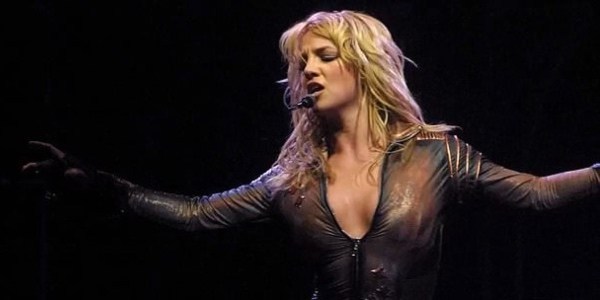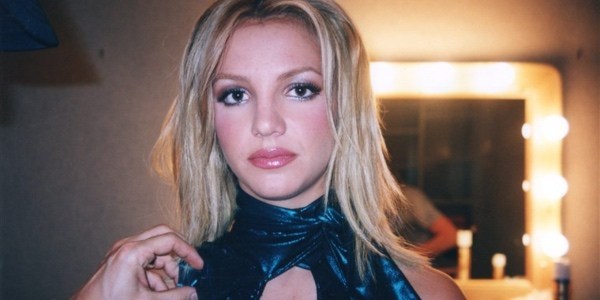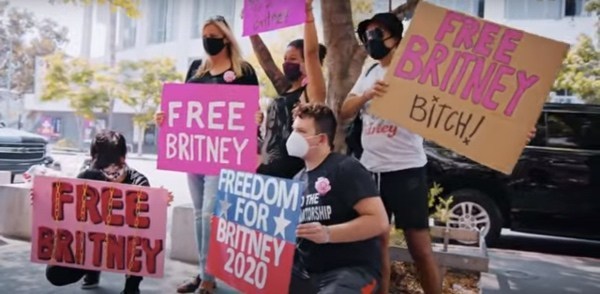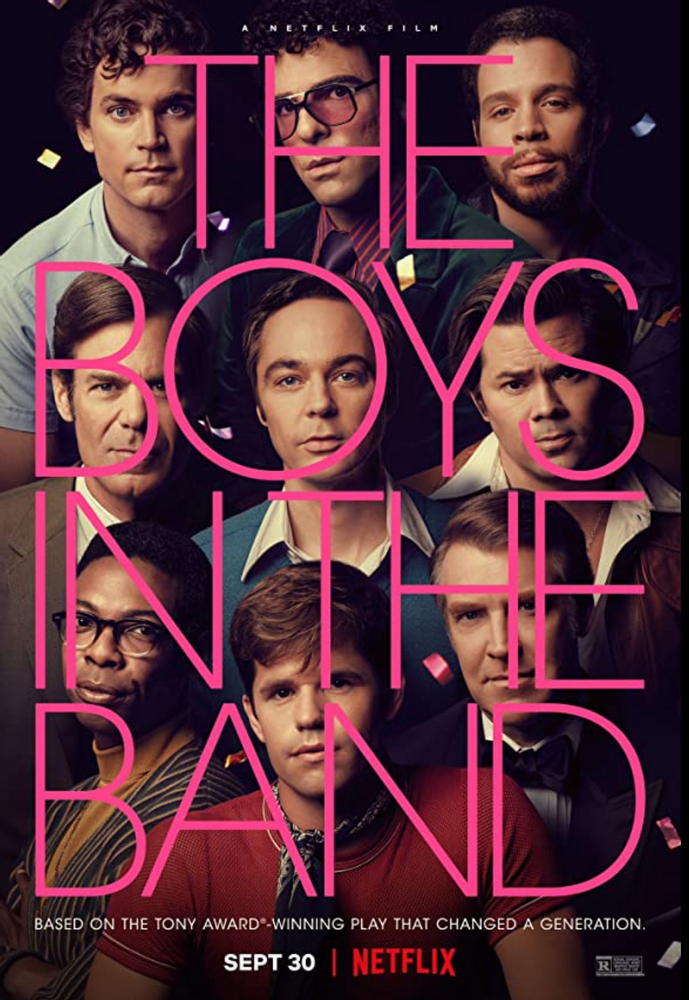NEW YORK TIMES PRESENTS: FRAMING BRITNEY SPEARS: #FreeBritney B*tch
2020 saw a lot of things. One of the more unexpected movements that came out of the year was the #FreeBritney movement that erupted, as the famed pop singer’s conservatorship for the past 12 years coming under severe scrutiny and cries for her freedom heard throughout the internet and outside courthouses.
But what really is going on? And how did Britney Spears get to this point? The New York Times, utilizing their program through FX, dives deep into the aspects of the conservatorship that oversees Spears as a person and an estate, delivering the present on the backbone of the past, her history, the fame, the success, and the highly publicized trouble she experienced in the late 2000s all culminating into the movement we now know today. While not a documentary of the highest caliber, there are deeply defined layers that not only have many reconsidering their treatment and viewpoint of the pop star but the subsequent normalized behavior towards celebrities and women that has plagued the industry for years.
“… Baby One More Time” – The Beginning
When Framing Britney Spears opens, it is November 2020 and fans are waiting outside a courtroom for the latest ruling regarding Spears‘ legal standing. They are there to make sure she sees and receives the support she has in her fans who believe her fight for freedom is long overdue. But, as the documentary admits early on, to garner any understanding of the now, we have to understand what brought Spears to this point. It is a common device within a documentary film that works effectively here – both in telling the story and in leaning into the conceived bias of her need for freedom (a bias the film will spend just over an hour validating).

Framing Britney Spears makes sure to carefully structure the beginning of Spears‘ story, bringing her former assistant and family friend Felicia Culotta, into the picture, showing off the letters she’s received from fans and the various Britney Spears memorabilia in the house, the pride she has in the pop singer is undeniable and setting the credibility for everything she will add to the documentary going forward. She has known Spears since she was 5, had seen her sing at the local church, and even accompanied her on her first tour when the Spears‘ family had to stay behind to take care of little Jamie Lynn Spears. As the documentary will show, she is/was the closest to Spears that is willing to speak.
Identifying their daughter’s talent early on, Jamie and Lynn Spears connected with talent agent Nancy Carson. Lynn and Britney moved to New York so she could take dancing and singing lessons, opening a wider opportunity for auditions. While she makes a break starring on the Mickey Mouse Club, its cancelation gives her a momentary reprieve from her goal of stardom, allowing her a normal high school setting and even a chance to join the high school basketball team. Though even the normalcy of her teenage years is short-lived as a record deal gives the promise of making all her dreams come true.
As Britney is whisked away to record and begin touring malls, she is described by many as serious and focused – all while her father Jamie Spears is mentioned alongside the belief of his drinking and failed business ventures, filing for bankruptcy and claiming his “daughter is going to be rich and buy me a boat”. There is a clear distaste for Spears‘ father established early on in Framing Britney Spears, as various talking heads discuss his absence during Britney Spears‘ rise to fame. And as Framing Britney Spears lays its groundwork for its case against Jamie Spears, Britney Spears is continually shown, images of the young aspiring pop star gladly interacting with fans and stories of her taking out $10,000 dollars and leaving hundreds throughout her home town for Christmas. There is an instant contrast through the interviews included and the editing that creates the narrative structure between Jamie and Britney Spears.
“Womanizer” – The late 1990s – 2000s
From sweet and innocent to sex symbol and “corruption”, the image of Britney Spears begins to change at the end of the 90s and into the early 2000s – not necessarily in the eyes of Spears, but rather in those who would place their own judgments and perspectives on her. While her fame continued to grow, her appearances on TRL continuing to grow, gracing the cover of Rolling Stone and releasing her follow-up album, the idea that Spears was becoming too sexualized became both the focus of parents and media outlets alike. Was this a case of too much too soon?

As this question begins to spiral out of control, the misogyny of the industry becomes grossly apparent, the severity even more apparent now as we are living in a #Metoo world. Spears is asked questions about her boobs in public interviews, questioned about her beliefs regarding sex before marriage, and criticized for embracing her sexuality. While those close to her recall to the New York Times cameras how Spears was appearing freer and caring less about pleasing people around this time, the tabloids and critics painted a different picture.
Things only became more grossly savage as her relationship and subsequent break up with Justin Timberlake threw legions of fans and critics against her, Timberlake seemingly controlling the narrative with Spears painted as the problem in the relationship and a cheater. Never given the chance, Spears was left without the opportunity to give her side of the story. She becomes the “slut” while Timerblake retains his “football captain” image, all while reporters interviewing the *NSYNC member about whether he had gone all the way and a music video further propagates that narrative.
It is heartbreaking when she is finally given her moment to speak in a 2003 interview, the reporter asking “what did you do” to the relationship. At this moment, with all the layers piling on, you as a viewer realize Spears did not lose her narrative in 2008 when her father became conservator, she lost it much earlier on. Compounding the entire framework laid here are the talking heads, as they look at the cameras, speaking of how “no one knew how to help her at this time”. In a #Metoo world, where women are coming forward finally telling their stories, many around them aware of what was happening but powerless to help, the heartbreak in hearing these words uttered about the pop star are all the more heartbreaking.

As a viewer, I did not need the continued backstory to understand how wrongly shaped this young woman had been, how the value of a photo and the beep of a register had affected this young woman so deeply. The shaved head photos and the attack with an umbrella on a reporter’s car warped into a deeper and more devastating reality. A deep psychological trauma was imposed on a young woman who did not have the support or the help to cope and manage. Her narrative was taken and she was set up to fail, even when she didn’t.
“Overprotected” – The Conservatorship
There is a lot to pack into this 74-minute documentary and Framing Britney Spears keeps it moving, giving as much as it can to the audience without taking away from the message it is delivering. There is a relevancy of her story that is still valid today and needs to be seen – and understood. Following Timberlake and the aftermath of their break up, Spears‘ marriage to Kevin Federline and relationship with Sam Lufti become the central elements leading up to the conservatorship. While her marriage to Federline ends, the custody battle between them continues, each wanting sole custody of their two children. As the tabloids and paparazzi run rampant (literally in her face in a gut-wrenching video display), her already spoken narrative continues to take a dive, Spears is labeled as a bad mother as she drives with her child in her lap and is seen partying at night with Paris Hilton. As everything seems to race to an unknown climax, Spears lands in the hospital.
The documentary uses a title card to introduce the definition of what conservator means, yet the definition it takes on as the film continues brings an ominous and horrific feeling of control and power – or the loss of it depending on whom you are speaking of. In 2008, following her hospital admission, it is decided Spears is no longer able to care for herself any longer, a temporary conservatorship placed on both her and her estate. Shortly after, Spears accepts the permanent conservatorship (which it is speculated she only accepted so she could see her children), her father Jamie Spears, with lawyer Andrew Wallet, now having access and control over her finances, her medical records, the doctors she sees, visitors, hired security and bodyguards, her work schedule – you name it – if it pertains to Britney Spears, Jamie is the final say.

While Spears would have a world-wide comeback a year later, a new album, a new single, and shortly after, a Las Vegas residency, fans begin to notice changes to the singer’s Instagram page, obscure messages that seemed to speak to her desire to find freedom. And so the #FreeBritney movement begins to develop. The New York Times brings seemingly credible sources in the lawyers that worked on the Spears‘ case throughout the years, taping into interviews with Britney herself just after the enactment of the conservatorship and her now recent decision to refuse to work until her father is taken off the conservatorship, giving a heavyweight to one side of the issue. And this is not the only evidence presented in support of the pop star.
Legions of fans and various celebrities have all taken a stand on the issue, stating their support of Spears and promoting the #FreeBritney movement. With her latest court battle this past November, there is a hopefully light at the end of the tunnel.
Conclusion: “I Wanna Go”
There is a lot of evidence, although at times speculative, that Framing Britney Spears delivers to its audience, asking them to consider the structure of the court system (yes, it is the burden of the conservatory to prove they no longer need a conservator) and questioning whether conservatorship can be so callously maintained when the person it is meant to protect is looking more like a business plan rather than a person. Furthermore, Framing Britney Spears forces audiences to reexamine the behaviors and perspectives of the past, reconsidering the normalized treatment of celebrities in exchange for their fame and success and the treatment of women in an industry that shows no mercy. Framing Britney Spears may not be the best documentary of 2021, but it is sure to become the most relevant and vital in the continued fight for freedom and equality.
Have you seen Framing Britney Spears? What do think? Let us know in the comments below!
The New York Times Presents: Framing Britney Spears was released on FX on February 5, 2021 and is streaming on Hulu.
Watch Framing Britney Spears
Does content like this matter to you?
Become a Member and support film journalism. Unlock access to all of Film Inquiry`s great articles. Join a community of like-minded readers who are passionate about cinema – get access to our private members Network, give back to independent filmmakers, and more.
Join now!





